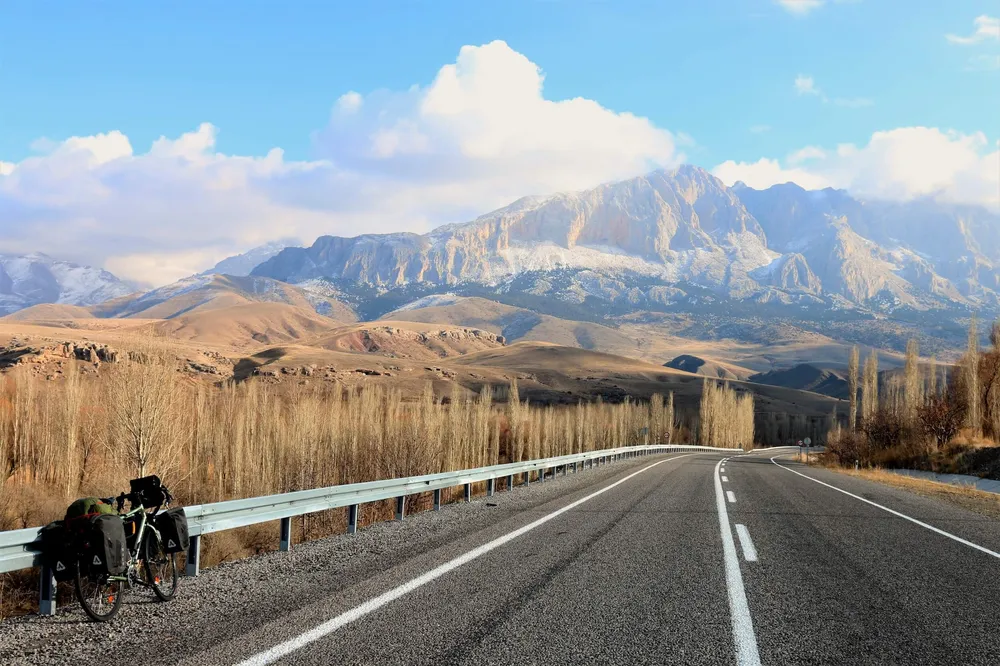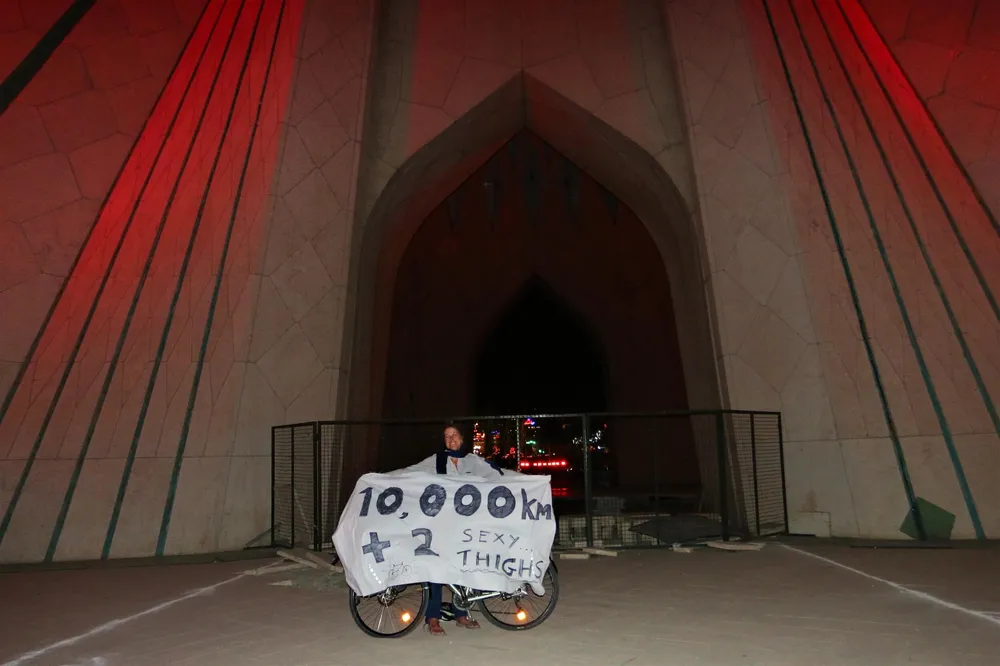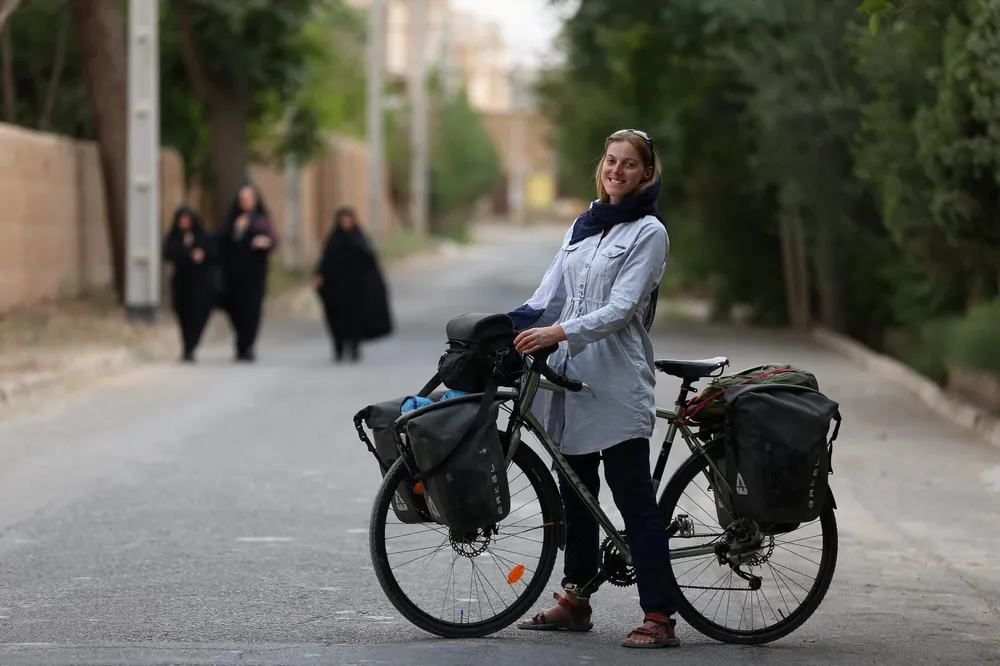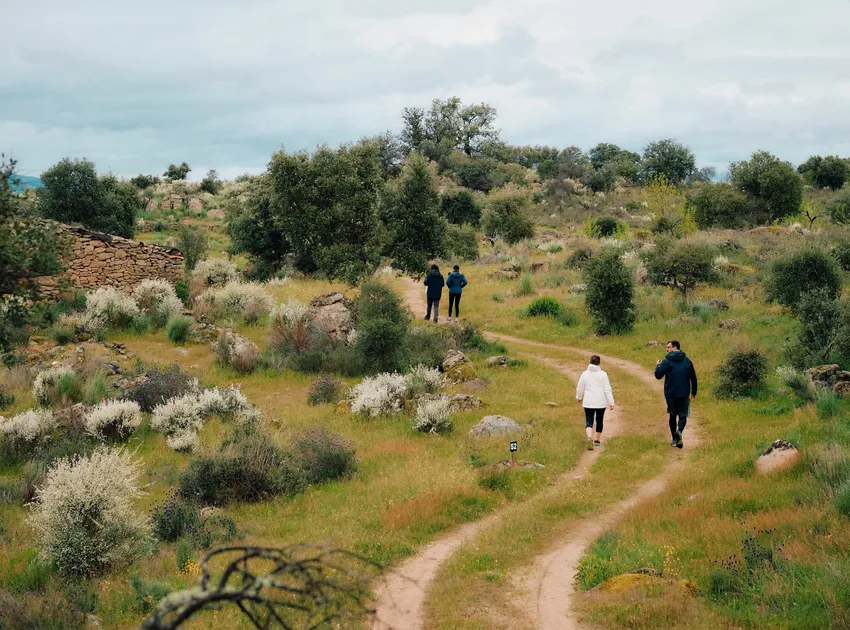The Slow Road to Tehran: An Interview with Rebecca Lowe (Part 1)
In 2015, Rebecca Lowe set off on her trusty bike Maud on a solo travel mission to cycle from London to Iran. Covering 11,000 kms, her journey took her through Europe to Turkey, Lebanon, Jordan, Egypt, Sudan and the Gulf before ending in Iran.
She wanted to explore a different side of the Middle East away from the headlines, meeting ordinary people and enjoying their wonderful hospitality. Her book, The Slow Road to Tehran reveals a warmth and kindness throughout the region as well as the challenges she faced along the way.
We were lucky enough to sit down with Rebecca and find out more about her incredible journey.
Note: We are conscious of the ongoing situation in Iran and the Middle East at the time of publication (June 2025) and feel it's important you know that our interview with Rebecca is certainly not intended to be political commentary. Wherever there is conflict, no matter the circumstances, it's important to remember that everyday, innocent civilians are impacted and we hope this is what comes across in our interview with Rebecca.
Firstly, what an adventure! Tell us a little bit about your trip and the motivations behind it.
The motivation was two-fold. I’d always wanted to have a big humdinger of an adventure before I settled down, but the other motivation was to write about the Middle East. I’d been working for the International Bar Association as their in-house reporter, writing about anything related to law or human rights around the world, and it just so happened that the Arab Spring took place while I was there. I developed a fascination with that part of the world but also a frustration with how it was so often portrayed in the media.
We read a lot in the media about the Middle East through the prism of policy and leadership, which can give a skewed sense of what these countries are like. People think they’re overrun with Islamists and extremists because they’re governed by such heinous regimes, but this often isn’t the case. I wanted to explore a different perspective, from the bottom-up, not the top-down, immersing myself in the communities there.
Once I decided I was going to do the trip, I told enough people to ensure that I did actually do it, or it would be incredibly shameful and embarrassing if I dropped out!
And why did you choose to travel by bike?
Well, originally I was thinking of travelling by motorbike, but I failed my motorbike test twice so I took that as a bad sign! But I’d also spoken to Oli [Broom, Founder of The Slow Cyclist] about his cycling adventure, as well as friends who had done similar long cycles around the world, and a bike seemed like the ideal way to travel. Walking is too slow. Motorised transport is too fast. But cycling is perfect; it’s immersive yet efficient. Plus you end up with a great set of buns at the end, which has always been one of my big life aspirations.

Did you have any reservations before you set out?
Interestingly, the people I told about the trip often had reservations about the places I was going to, which they perceived as risky and dangerous. However, because I’d written a fair amount about the Middle East, and travelled there previously, I knew quite a lot about the people and the hospitality. I’d also done my research and planned my route carefully, so I felt confident I’d be looked after. But I was much less confident about my ability to cycle.
The only bike tour I’d been on beforehand was a charity ride from London to Paris. I was in a group called the Rhinos, which was the slowest of the three groups (later renamed ‘the winos’ for reasons that I found deeply unfair), and we didn’t carry our own bags. So the Tehran ride was the first time I’d ever used panniers, and it took me about a week just to learn how to steer. My Kona Sutra tour bike, which was very kindly donated by Kona as sponsorship, only arrived the day before I left, so I ended up not doing any training at all. I thought, ‘I’ll be on the road for so long, I’ll just get fit as I go’ – which, in retrospect, was actually a terrible idea.
Looking back, what do you think you experienced on a bike that you wouldn’t have done using public transport?
I mean, you see everything. That’s the joy of it. On motorised transport everything is a blur, but on a bicycle everything has a beautiful clarity. You’re not flying from tourist destination to tourist destination; you’re going through the cracks and crevices in between, which is where normal, everyday life happens. That was the Middle East I wanted to see.
The great thing about being on a bicycle is that people are naturally drawn to you. They’re impressed that you’ve made it to their village in the middle of nowhere under your own steam. They want to help you, they’re curious about you – and often they slightly pity you too! You’re not just sweeping in and out of their homes like a tourist, aloof and detached, but becoming embedded in their culture and daily life. It’s a great leveller.

Your trip was originally planned for seven months but lasted a year in total, so very much ‘slow travel’. Do you feel you would have missed things if you’d completed it in seven months?
Definitely. That’s why I had to extend it. It turned out that seven months was wildly ambitious, and I realised early on that I wouldn’t be able to take any detours along the way or properly absorb the environment around me. I’d constantly be trying to get to the next destination as quickly as possible, which wasn’t what the trip was meant to be about.
The problem with extending (as well as causing some difficult conversations with my mother and partner Patrick), was that I ended up cycling through the Sahara, Gulf and Iran at the hottest time of the year. Which was exactly the opposite of what I’d intended to do when I was planning the trip.
How did you cope with the heat?
It was extremely tough at times. In the Sahara, the locals warned me about an impending ‘heatwave’, which slightly amused me as it was already 45°C at the time. But at least the heat was dry there and gave me an excuse to snooze between 12-4pm every day. In the heavy humidity of the Gulf and Iran it was harder. On my final ride between Qom and Tehran the heat was so bad that my inner tube exploded. It was 48°C with a fierce headwind, so it felt like flames were being blasted into my face. I was incredibly happy to reach Tehran, and when I finally got there – five hours later than planned – the first thing I thought was ‘I’m never cycling again!’
But did you eventually get back in the saddle?
Yes! It was a momentary blip, just long enough to let the buns recover. I’ve now started cycling with my two young daughters, so it’s a very different type of riding, but still a lot of fun.

In your book, you say, ‘there’s measured risk and there’s recklessness, and I feel that often the two are confused.’ How did you weigh this up on your travels to make the most of opportunities while staying safe?
It’s a very good question and I don’t think I always got it right, but I think the more you travel, the better your instincts are. I had travelled quite a lot prior to this trip and I trusted myself to make the right decisions. There are certain precautions you need to take, especially as a woman, such as avoiding nighttime travel and staying in fairly public places. But I’d weigh up each encounter and circumstance as I went. I stayed with lots of people through websites like Couchsurfing and Warmshowers, which felt secure. On a bike, you’re generally very conspicuous – particularly as a woman in the Middle East – so it’s quite difficult for anyone to cause you harm.
Do you think there are any benefits to being a female solo traveller in the Middle East?
Absolutely! As a foreign woman, the region opens up to you. You can be an ‘honorary man’ and do things like smoke shisha, but you can also join the women in their homes and see what lies beneath the veil. As a man, you’d be viewed as a threat and half the population would be closed off to you.
But there are other advantages too. There’s a wonderful quote by Freya Stark: ‘The great and almost only comfort about being a woman is that one can always pretend to be more stupid than one is and no one is surprised.’ And it’s true. When I got into trouble I just could play into the stereotype of a silly woman – and bingo, I was off the hook!
I strongly believe that female solo travel is not as dangerous as people think. Bad things can happen, of course, but they’re rare; they just seem more prevalent because these are the stories that make the headlines. Women, statistically, are much more likely to be harmed in the home than outside of it, yet the perception persists that travel is rife with risk.
It’s true that I had some problems with men along the way and it would be disingenuous not to acknowledge that. But generally I found that the attention I got was more due to a sense of opportunism or ignorance than outright aggression. It was manageable. There will always be risks, of course, but things can happen anywhere. You just have to decide where you want to draw the line.
Continue reading in part two for Rebecca's thoughts on cultural differences, her favourite places, and the lessons she learned along the way.
You can read all about Rebecca’s adventure in her wonderful book The Slow Road to Tehran or follow her current adventures on her Instagram account @reo_lowe.
If you’ve been inspired to embark on a solo travel adventure of your own, our scheduled journeys are a great place to start.
Find a Slow Cycling journey here.



